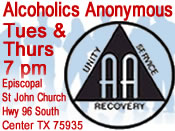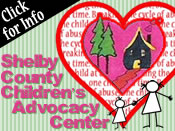October 29, 2019 – As deer season begins, motorists are urged to stay alert in pre-dawn hours and after dark. Deer are on the move through the nine-county Lufkin District and several crashes involving deer hits have been reported. TxDOT wants to remind drivers of the dangers of deer on the roadways and how quickly they will run across the roadway.
Motorists are urged to be attentive, especially just after sunset and the hours just before sunrise. These times are when the most deer versus vehicle collisions occur. Pay attention to road signs that indicate a heavy wildlife population in the area and reduce speed where deer have been known to cross.
“We usually see more deer hits in rural areas, but so far this year, there have been several on state and US highways, like the crash that occurred Tuesday on US 69 North in Angelina County,” said Rhonda Oaks, spokesperson for the Lufkin District. “Because deer are so much more active this time of year, we urge motorists to stay alert, especially during the dusk and pre-dawn hours when deer are known to move around more.”
Safety tips that could help motorists avoid a deer versus vehicle crash include:
- Reduce speed if you see a deer near the edge of the roadway. Deer seldom run alone. If you see one deer, others could be nearby.
- When driving at night, use high beam headlights when there is no oncoming traffic. The high beams will better illuminate the eyes of the deer, but be careful not to use high beams in fog.
- Slow down and blow your horn with one long blast to frighten the deer.
- Brake firmly when you notice a deer in or near your path, but stay in your lane. Many serious crashes occur when drivers swerve to avoid hitting a deer.
- Always wear your seatbelt.
- If your vehicle strikes a deer, do not touch the animal. A frightened and wounded deer can hurt you or further injure itself. Move your car off the road, if possible, and call 911. If possible, remain in your vehicle. It is the safest place. Many secondary crashes occur due to pedestrians in the roadway.
For more information, contact Rhonda.Oaks@txdot.gov or (936) 633-4395.









